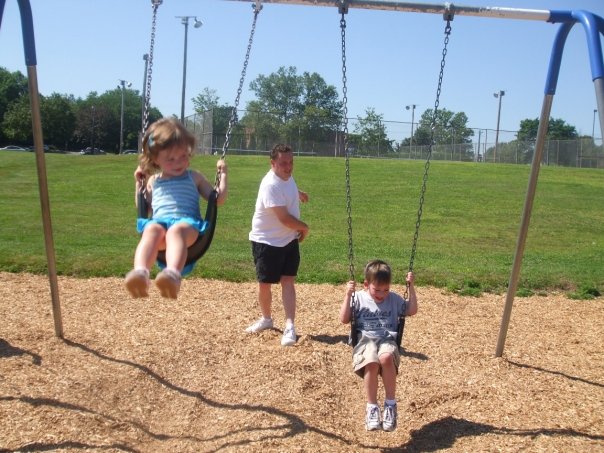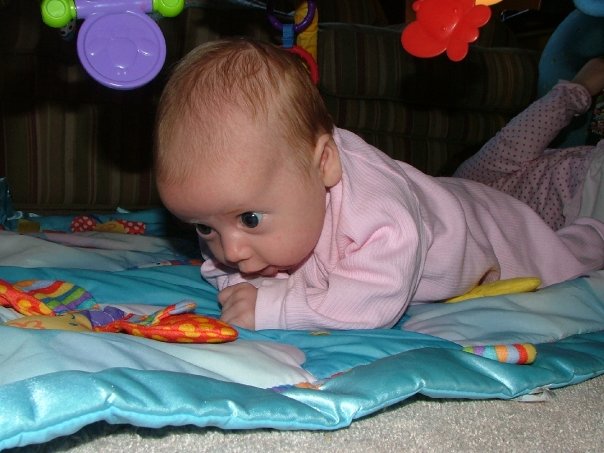
Tips to Combat Toddler Food Refusal: Introducing New Foods
March 1, 2019
May 2019 Family Friendly Community Events
April 19, 2019By Annika Zallek MOT OTR/L TEIS Occupational Therapist
Container Baby Syndrome isn’t exactly a medical syndrome but it refers to the occurrence when babies spend too much of their time awake “contained” in different types of baby equipment. Babies need to be able to (safely) move around and explore their environments and it’s difficult to do this if they are stuck in a baby carrier, bouncer seat, car seat or exersaucer for much of the time.
There are a couple of reasons that are likely contributing to this “syndrome”. The Back to Sleep campaign that began in the 90’s stressed the importance of placing infants and babies (under 1) on their backs to sleep in order to prevent SIDS. However, this doesn’t mean that they need to be on their backs all of the time! It’s important for babies to be in different positions in order to learn how to move their bodies and to provide learning and strengthening opportunities.
Effects of spending too much awake time on backs and in containers include:
-muscle weakness
-delayed motor milestones
-plagiocephaly (flat spot on head)
-torticollis (tight neck muscles or inability to turn head freely in both directions or to tilt/turn head to one side only)
-decreased social interaction
-impacts on visual development
Another reason for the increase in time babies spend in the containers is the different types of equipment available to help contain them. There are car seats, jumpers, walkers, Bumbo seats, swings, bouncers, etc! All of these items serve a purpose but if a baby just moves from one container to another, their bodies aren’t moving around in a way that helps to strengthen their neck, trunk and back muscles, as well as their arms and legs. Babies need to learn to lift up their heads, kick their legs, roll over, reach for toys and these activities can be difficult if they are contained. Babies need time spent on the floor or if that’s not an option, in a playpen or play yard where they can move around freely.
Some different positions your baby can play/relax in (as long as they are properly supervised):
When your baby is on the floor:
- lying on her side with a rolled blanket for support to encourage reaching for toys
- tummy time-your child may initially get upset but as they get used to this position, you can increase the time
- on his back-playing with his arms and legs to move them around, reaching for toys
When your baby is in your arms/on your lap:
- holding them as you move around the house, facing front, on your hip, or facing backwards. This is important bonding time when your baby is physically close to you.
It will be necessary at times for you to have your child in some type of “container” in order for you to get things done as well as for her safety. However, these times should be limited as much as possible in order to help your child strengthen and develop! If you have any concerns about your child’s development, please talk with your pediatrician and/or request an early intervention (EI) referral to see if early intervention therapy can help your child.



 Send to a friend!
Send to a friend!